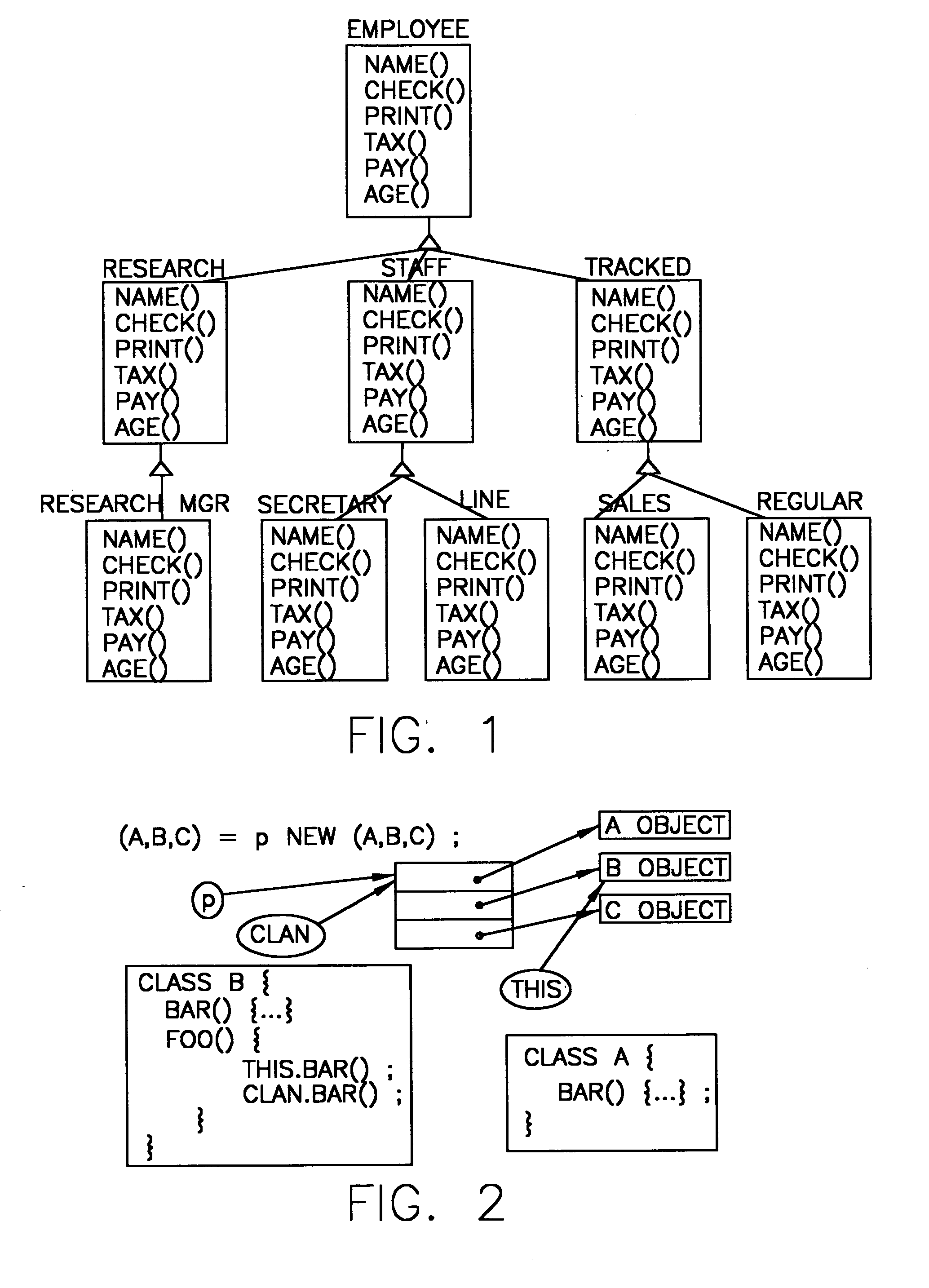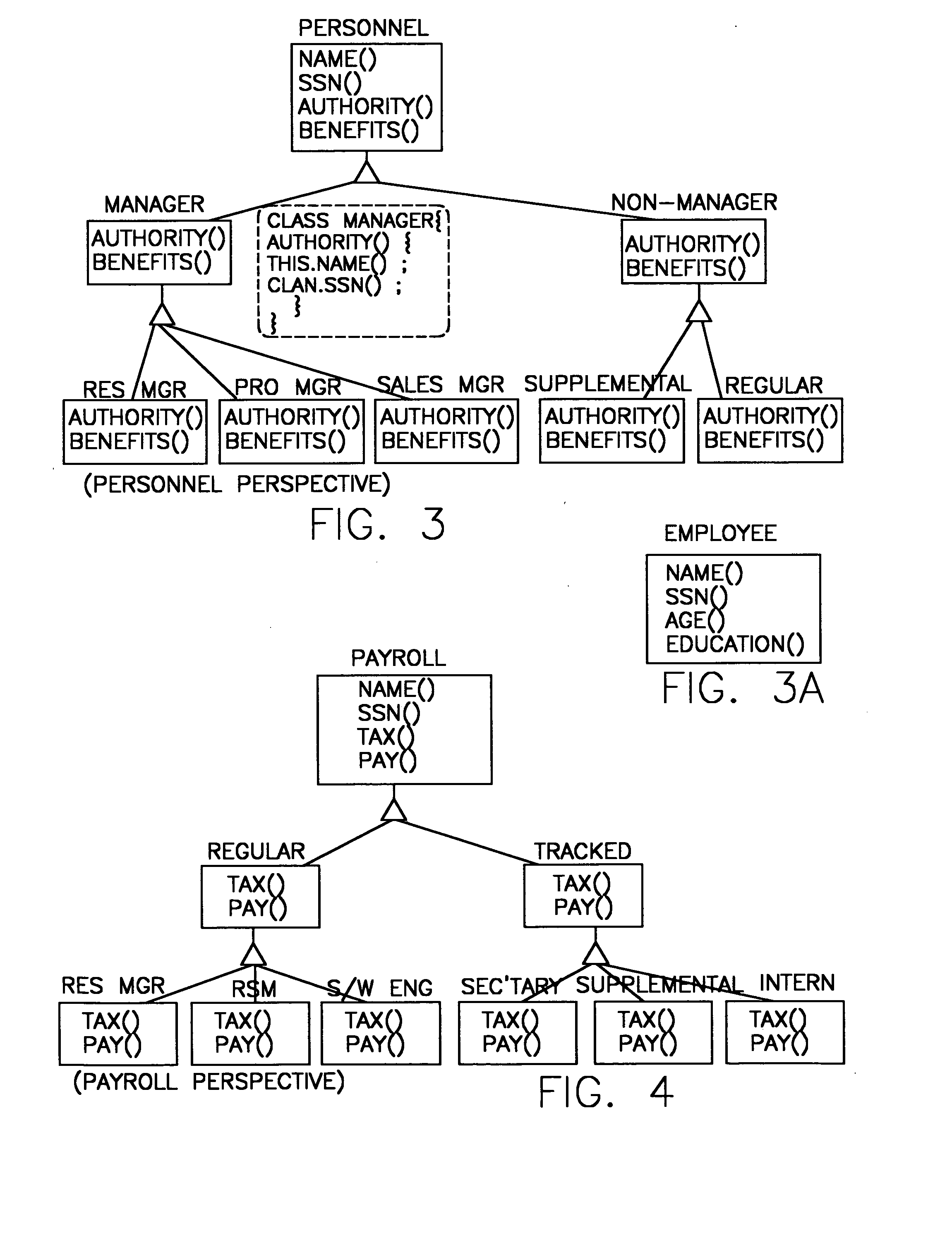Variational modeling using extension types
a technology of extension types and variables, applied in the field of software artifact modeling, can solve problems such as frustration for users, software engineering discipline faces similar problems, and simple changes can be frustrating
- Summary
- Abstract
- Description
- Claims
- Application Information
AI Technical Summary
Problems solved by technology
Method used
Image
Examples
Embodiment Construction
In connection with developing extension types, one may consider the Decorator pattern. [4] A Decorator pattern allows one to attach additional responsibilities to an object. Consider a Display class that contains a paint( ) method for painting graphical objects. A display object Display d=new Display ( )
can be decorated using DecoratedDisplay class DecoratedDisplay dd=new DecoratedDisplay(d)
DecoratedDisplay is an enhanced Display that contains an enhanced paint( ) method. A call to d.paint( ) is then re-factored to dd.paint( ), to get the effect of the new paint method.
HyperJ (see below) provides a simpler solution for Decorator pattern using a composition rule similar to the following: override(Display, (DecoratedDisplay, Display))
This essentially merges the two classes (the old Display and DecoratedDisplay) into one class. The new class is still called Display and it contains all functionality of the two classes. A method such as paint( ) will be picked up from Decorat...
PUM
 Login to View More
Login to View More Abstract
Description
Claims
Application Information
 Login to View More
Login to View More - R&D
- Intellectual Property
- Life Sciences
- Materials
- Tech Scout
- Unparalleled Data Quality
- Higher Quality Content
- 60% Fewer Hallucinations
Browse by: Latest US Patents, China's latest patents, Technical Efficacy Thesaurus, Application Domain, Technology Topic, Popular Technical Reports.
© 2025 PatSnap. All rights reserved.Legal|Privacy policy|Modern Slavery Act Transparency Statement|Sitemap|About US| Contact US: help@patsnap.com



